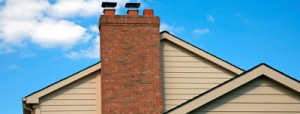Before 2000 chimney inspectors relied on their own methods for what was necessary during a chimney inspection. Since then a level inspection code was put into place by the National Fire Protection Association. NFPA 211 is now the standard inspection code for chimneys, fireplaces, vents, and solid fuel burning appliances. All chimney inspections, including those performed by Wells & Sons Chimney Service, are now clearly defined as Level 1, Level 2, or Level 3.
 Each level of inspection covers specific items, detail, and documentation. You should determine what type of inspection you require based on your chimney and its venting system. Below is an explanation of each of the three levels of the NFPA 211 to help you determine which level of inspection your chimney sweep should perform.
Each level of inspection covers specific items, detail, and documentation. You should determine what type of inspection you require based on your chimney and its venting system. Below is an explanation of each of the three levels of the NFPA 211 to help you determine which level of inspection your chimney sweep should perform.
Level 1 Chimney Inspections
If your appliance or your venting system has not changed, and you plan to use your system as you have in the past, then a Level 1 inspection is a minimum requirement. A Level 1 inspection is recommended for a chimney under continued service, under the same conditions, and with the continued use of the same appliance. In a Level 1 inspection, your chimney service technician should examine the readily accessible portions of the chimney exterior, interior, and accessible portions of the appliance and the chimney connection. Your technician will be looking for the basic soundness of the chimney structure and flue as well as the basic appliance installation and connections. The technician will also verify the chimney is free of obstruction and combustible deposits.
Level 2 Chimney Inspections
A Level 2 chimney inspection is required when any changes are made to the system. Changes can include a change in the fuel type, changes to the shape of or material in the flue (i.e. relining), or the replacement or addition of an appliance of a dissimilar type, input rating, or efficiency.
Additionally, a Level 2 inspection is required upon the sale or transfer of a property or after an operation malfunction or external event that is likely to have caused damage to the chimney. Building fires, chimney fires, seismic events as well as weather events are all indicators that this level of inspection is warranted.
A Level 2 inspection is a more in-depth inspection than a Level 1 inspection. It includes everything in a Level 1 inspection, plus the accessible portions of the chimney exterior and interior including attics, crawl spaces, and basements. It will address proper clearances from combustibles in accessible locations.
There are no specialty tools (i.e. demolition equipment) required to open doors, panels, or coverings in performing a Level 2 inspection. A Level 2 inspection shall also include a visual inspection by video scanning or other means in order to examine the internal surfaces and joints of all flue liners incorporated within the chimney. No removal or destruction of permanently attached portions of the chimney or building structure or finish shall be required by a Level 2 inspection.
Level 3 Chimney Inspections
When a Level 1 or Level 2 inspection suggests a hidden hazard, and the evaluation cannot be performed without special tools to access concealed areas of the chimney or flue, a Level 3 inspection is recommended. A Level 3 inspection addresses the proper construction and the condition of concealed portions of the chimney structure and the flue. Removal or destruction, as necessary, of permanently attached portions of the chimney or building structure will be required for the completion of a Level 3 inspection.
A Level 3 inspection includes all the areas and items checked in a Level 1 and a Level 2 inspection, as well as the removal of certain components of the building or chimney where necessary. Removal of components (i.e., chimney crown, interior chimney wall) shall be required only when necessary to gain access to areas that are the subject of the inspection. When serious hazards are suspected, a Level 3 inspection may well be required to determine the condition of the chimney system.
Annual chimney inspections are very important and should not be missed. Numerous fires are caused each year because of chimneys and fireplaces that have not been properly maintained. Wells & Sons is a certified chimney sweep and is ready to inspect your chimney whenever you call.
Resources: National Fire Protection Association
